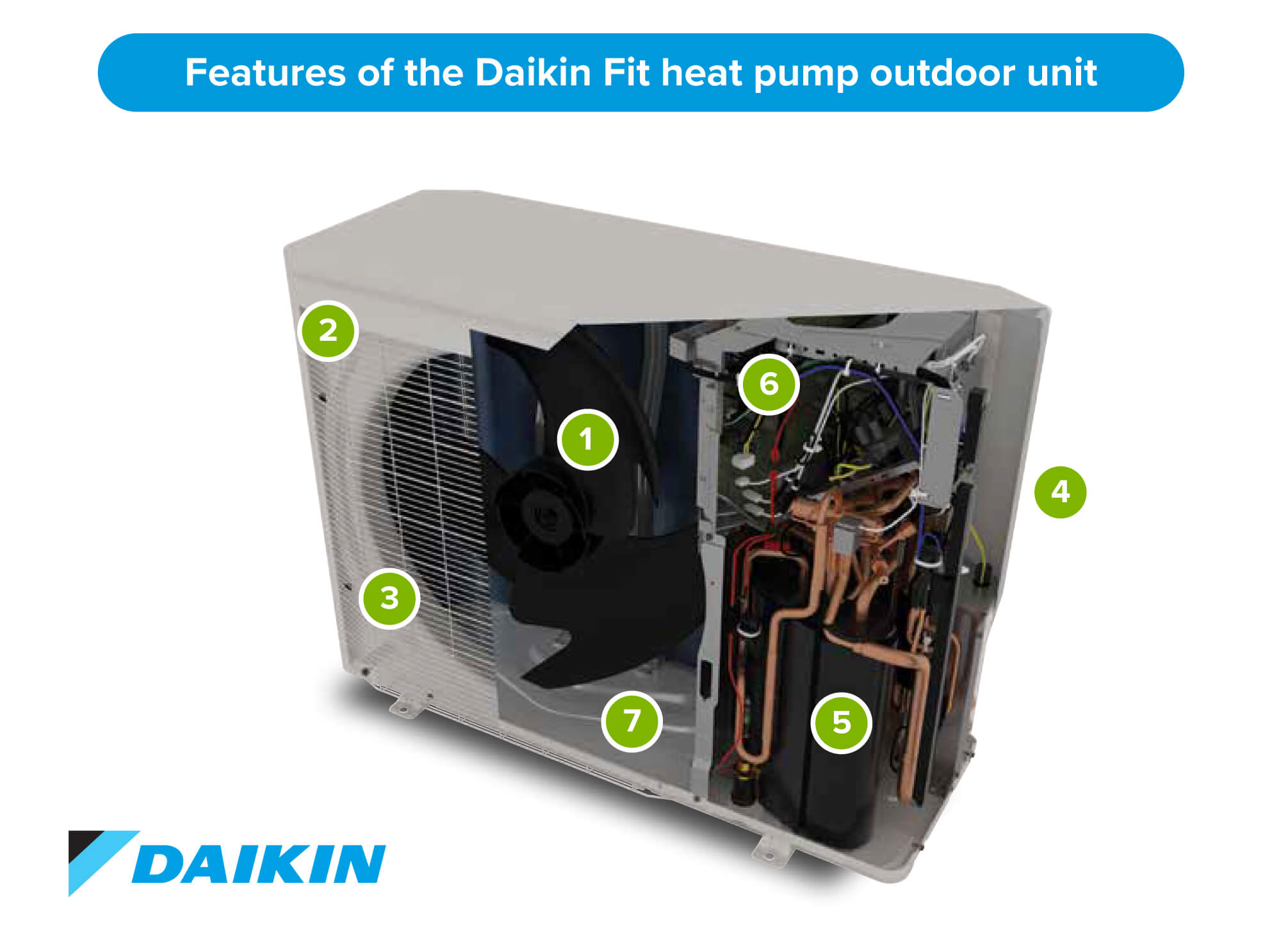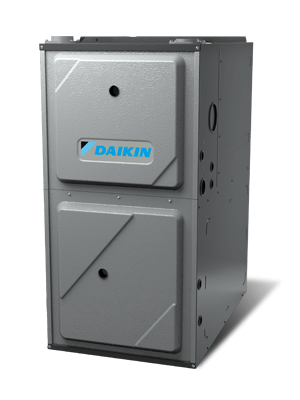Heat pumps: do they work in Minnesota’s cold climate?
Air source heat pumps (ASHPs) have existed for many years, but the most recent generations of heat pumps have made significant improvements to their operations, making them more efficient and reliable for colder climates.
Installing a new ASHP in your home can help you lower energy usage and raise heating efficiency. But do heat pumps work in Minnesota?
Heat pumps can operate at very cold temperatures
Until recently, limitations on the efficiency of heat pumps were due to cold temperatures. During the colder months in climate zones 6 and 7, which include Minnesota, ASHPs did not operate efficiently. In temperatures below 40˚F, the ability of the heat pump’s refrigerant to absorb and release heat was affected, which caused the ASHP to work harder and draw more electricity, making it less efficient.
Due to recent technological advances, heat pumps are now capable of operating in very cold climates.
A recent study conducted by the Center for Energy and Environment, a Minnesota non-profit corporation that helps individuals and businesses achieve their energy efficiency goals, found that while older ASHP models begin significantly losing effectiveness at temperatures below 40˚F, the newest generation of pumps operate efficiently at temperatures between 0˚F and - 13˚F.
The study also found that in moderate climates at certain temperatures, the newer generation ASHP’s efficiency increased by two to four times compared to that of standard electrical heating systems.
The newer generations of ASHPs, also known as “inverter heat pumps”, are able to function at lower temperatures due to their inverter compressors. Inverter compressors allow heat pumps to operate at different speeds based on temperatures - increasing their heating capacity and efficiency versus older generation equipment.
Heat pumps transfer heat in both directions
The basics of heat pump technology is that it can transfer heat in either direction - it can transfer heat into a space to warm it, and transfer heat out of a space to cool it down.
Heat pumps are comprised of two coils (an indoor and an outdoor coil), a compressor and refrigerant.
For heating in cold temperatures, heat energy is removed from the outside air by the refrigerant in the outdoor coil. The pressure and temperature of the refrigerant is increased by the compressor, transforming the refrigerant into a hot gas. The heat is then released from the refrigerant by the indoor coil as the gas condenses back into a liquid.
Variable speed compressors also aid in the process by increasing the compressor speed when outdoor temperatures drop.
Minnesotans are already using heat pumps
National sales of heat pumps have been increasing, with heat pump sales
surpassing those of natural gas furnaces in 2022.
In Minnesota, homeowners have already begun using heat pumps. Between 2013 and 2016, the number of ASHPs sold in-state
rose more than 25% compared to previous years’ sales, with an estimated 20,000 units sold per year.
More recently, Minnesota has seen
an increase of applications for rebates from utility companies for the use of heat pumps - about 2,000 in 2019, then more than doubling to 4,600 by 2022 according to the Air Source Heat Pump Collaborative.
The Inflation Reduction Act (IRA) has served as an incentive for Minnesotans to switch to heat pumps. The provisions of the IRA provide for a 25C
tax credit of 30% of the cost for eligible improvements to the home conducted during the year by a taxpaying homeowner. While the IRA tax credit has a cap of $1,200 per year, an exception is made for heat pumps, which are eligible for up to a $2,000 tax credit, provided that they meet certain efficiency requirements.
In addition to the IRA tax credits, some utility companies offer rebates for homes with a secondary heat source, such as a natural gas furnace.
Home Service Plus: Minnesota’s trusted heat pump experts
CenterPoint Energy’s Home Service Plus® (HSP) can help you find the right heat pump for your home. Our trusted team of service technicians are ready to help you with all of your heating, ventilation and air conditioning (HVAC) installation and maintenance needs.
Daikin heat pumps are one of the brands that we offer through HSP.
The following video uses a Daikin heat pump to illustrate how heat pumps work.
State-of-the-art technology is driving heat pump efficiency
The newest generations of heat pumps have improved on earlier models to make them even more efficient and long lasting.
Take a look at the custom features of the Daikin Fit heat pump:

-
Variable speed fan - this DC powered fan provides high efficiency and low noise.
-
Blue vision corrosion coating - hydrophilic coating protects the coil and keeps it clean.
-
7mm coil - featuring a compact casing design, the coil provides heat exchange with high efficiency.
-
Inverter board - cooled by a refrigerant circuit, the pressure drop of the condenser fan in earlier generations has been eliminated.
-
Daikin swing compressor - high efficiency compressor, which has the added feature of Quiet Mode - producing sound as low as 45dBa.
-
Intelligent defrost mode - this mode helps stop frost and ice from accumulating on the outdoor unit, as well as providing greater comfort by allowing for longer operation times when heating (when compared to HVAC systems with Intelligent Defrost).
-
Advanced water shedding drain pan - effective water shedding is vital for the function and lifespan of an HVAC unit, which is why the Daikin Fit is engineered with multiple drain holes and water channels for the utmost effectiveness.
Heat pumps lose efficiency as the temperature drops
While the advances in heat pump technology have been significant, it’s important to remember that not all ASHPs are created equal. Standard heat pumps work efficiently down to about 20˚F, and cold climate ASHPs, which can handle sub-zero temperatures, use more electricity to transfer heat the colder it gets. Heat pumps also lose heating capacity as the temperature drops.
However, both types of heat pumps are still a viable option for efficient and effective heating when paired with a secondary heat source such as a high efficiency natural gas furnace to handle the coldest parts of the winter.
Pair a heat pump with a high efficiency natural gas furnace for efficient and effective heating

A heat pump works efficiently as a primary heat source until the outside temperature causes the heat pump to work less efficiently than the furnace, at which point the heat pump switches off and the furnace turns on and takes over.
Using both a heat pump and a high efficiency natural gas furnace can help provide your home with reliable and efficient comfort year-round.
Heat pumps have multiple advantages for cold climates
-
Energy efficiency: because ASHPs transfer heat from the air, they are able to put out an estimated
4 times the amount of heat energy than the amount of electrical energy it uses.
-
Clean energy: when replacing electric, propane, and natural gas heaters, ASHPs can reduce the amount of C02 released, reducing a homeowner’s carbon output by
as much as 55%, estimates the Center for Energy and Environment.
Switching to a heat pump from electric heating or delivered fuels can reduce your energy use
If you are currently heating your home via electric resistance or delivered fuels, such as propane, switching to a cold-climate heat pump - or installing a heat pump to work alongside a secondary heat source - could reduce your home’s energy consumption.
A study by the Northeast Energy Efficiency Partnerships found that when cold climate ASHPs were installed in the Northeast, the annual energy savings when replacing electric heaters was about 3,000 kWh, and about 6,200 kWh when replacing oil heat systems. When the ASHP was used with an oil based heat system as a secondary heat source, the savings were still around 3,000 kWh.
As for installation, ASHPs come in two different types - one which uses ductwork, and one which is ductless. The first kind can be hooked up to existing ductwork in your house. Duct free heat pumps are commonly referred to as mini-splits and are installed without needing to be connected to a duct system.
ASHPs are versatile enough to be able to be installed in almost any home.